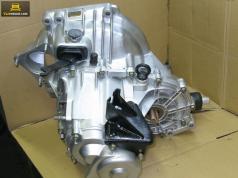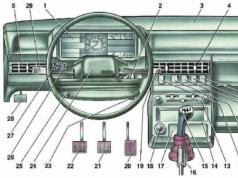The vehicle's heating and ventilation system is used to regulate the climate in the passenger compartment and also to circulate air in it. The VAZ-2110 heater is one of the main elements in this system. It depends on its performance how you will feel in the car at sub-zero temperatures outside. Its design is quite simple, although it differs significantly from the "classic" VAZs and the "Samara" family. In this article, we will consider what a VAZ-2110 heater is, how it works, what problems arise in its device, and how to fix them.
What is the difference from previous models
Up to "ten" all VAZ models were equipped with a "stove" providing for the installation of a heating radiator inside the cabin. At the same time, it was located on the passenger side in a very inconvenient place for repair and replacement. To get to it, it was necessary to disassemble half of the cabin. In addition, the control of the supply of warm air to the passenger compartment was carried out by means of a special tap, operated by a cable coming from a lever on the control panel. This valve cut off the flow of coolant into the heater radiator, thereby regulating the temperature of the supplied air. Everything would be fine if the crane did not break so often. Often, with the onset of cold weather, drivers found that the heating control lever simply stopped moving, which was a consequence of the acidification of the internal elements of the locking device. Also, such a malfunction often caused the coolant to leak from it, naturally, into the cabin, which created additional discomfort.
The heating radiator VAZ-2110, to the delight of car owners, is not installed in the cabin, but in the engine compartment, which greatly simplifies access to it, opening up the possibility of easy diagnostics, repair and replacement of this element. In addition, there is no such problematic and ever-breaking faucet in the top ten. Its role is now played by a special damper, which, in fact, regulates the supply of warm air. 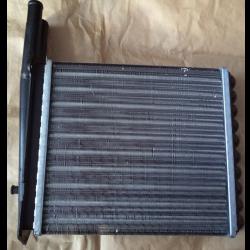
The design of the "stove"
The VAZ-2110 heater itself is a collapsible structure, consisting of the following main elements:
- plastic casing (body);
- radiator;
- electric motor with fan;
- damper drive (micromotor reducer);
- damper.
Heater control features
The coolant circulating in the system constantly passes through the radiator of the "stove", heating it up. But here the heater is already controlled not manually, but with the help of an automatic system, which even has it in the cabin. It is enough for the driver to set the desired mode, and the automation will independently maintain a certain climate. on the VAZ-2110 monitors all the processes taking place, notifying the driver about the temperature in the cabin.
You can also control the heater manually. To do this, it is enough to open the damper to the required angle and adjust the speed of the fan motor.
In principle, the heating system of the “dozens” is well thought out by the designers, however, VAZ-2110 malfunctions associated with it occur quite often. The main reason for this is lack of proper maintenance and poor quality of parts.
Signs of the main malfunctions of the "stove"
Signs that the VAZ-2110 heater has failed are:
- cold air entering the passenger compartment when the damper is open;
- lack of air flow when the fan is on;
- the air injected into the passenger compartment is not warm enough.
Let's consider each case separately. 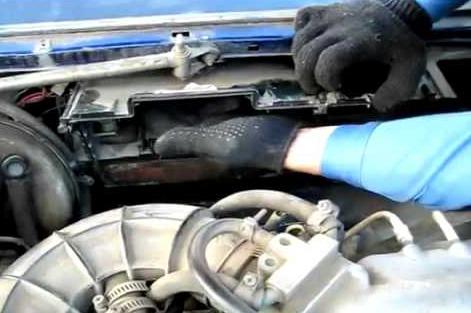
Why does the "stove" not heat
Cold air from the deflectors may indicate the following malfunctions:
- the interior temperature sensor is out of order;
- the heater control unit is faulty;
- the micromotor gearbox, which drives the damper, has failed;
- the heater radiator is faulty (the coolant does not circulate).
In the first case, the sensor should be checked. It is located on the ceiling in the area of the lighting lamp. It is checked with an ohmmeter or a car tester in its mode. At a temperature of 20-22 degrees Celsius, its resistance should be about 20 ohms, at 15-16 degrees - within 25 ohms. If the sensor is found to be defective, it should be replaced. 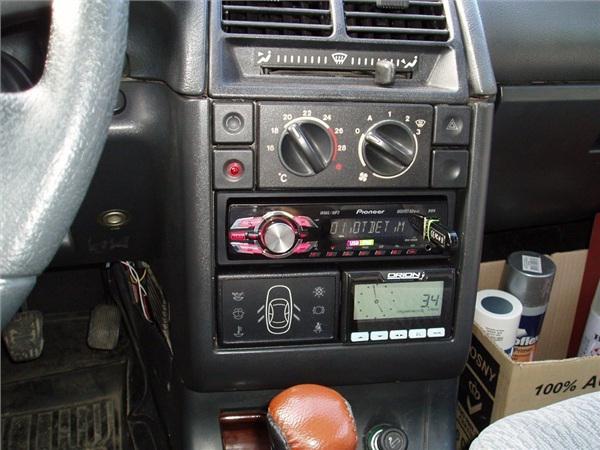
Controller diagnostics are made by measuring the voltage between the pink and brown wires on the large connector. To do this, the automatic control unit is removed from the seat, the ignition is turned on, and the voltage is measured with a voltmeter by scrolling the regulator knob. If its indicator changes, the controller is working. Otherwise, it needs to be repaired or replaced.
To check the micromotor gearbox, you will have to disassemble the heater case and connect the power directly from the battery to the motor connector. If it works, the cause must be looked elsewhere. If not, you will have to replace it.
The heating radiator VAZ-2110 is also capable of causing a lot of trouble. On average, it has to be changed every 2-4 years. 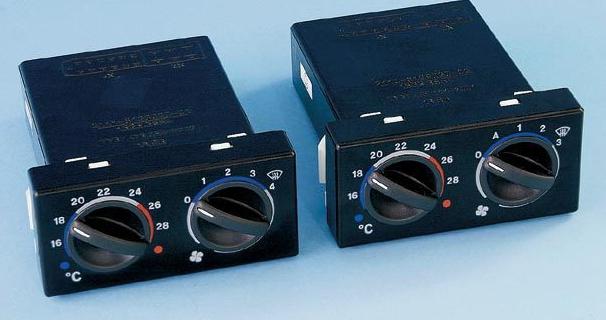 The reason for this is either the appearance of internal scale deposits formed due to the poor quality of the metal from which it is made, or the use of low-grade coolant. The radiator of the "stove" VAZ-2110 can have an aluminum or copper structure. The latter version is preferable, since, unlike the aluminum version, it lasts much longer and can be repaired (sealed) in the event of a leak.
The reason for this is either the appearance of internal scale deposits formed due to the poor quality of the metal from which it is made, or the use of low-grade coolant. The radiator of the "stove" VAZ-2110 can have an aluminum or copper structure. The latter version is preferable, since, unlike the aluminum version, it lasts much longer and can be repaired (sealed) in the event of a leak.
The fan does not drive air
If, when the heater fan is turned on, it does not work, there may be only three main reasons:
- defective resistor (regulator);
- blown fan fuse;
- the electric motor is out of order.
The resistor is checked by measuring the resistance at its terminals. The regulator itself, like, in principle, other electronic devices of the VAZ-2110, fails quite rarely, more often the problem is the lack of contact or a break in the wiring.
The blower fuse is located in the engine compartment. You can determine its serviceability with a conventional tester. If it is defective, replace it. 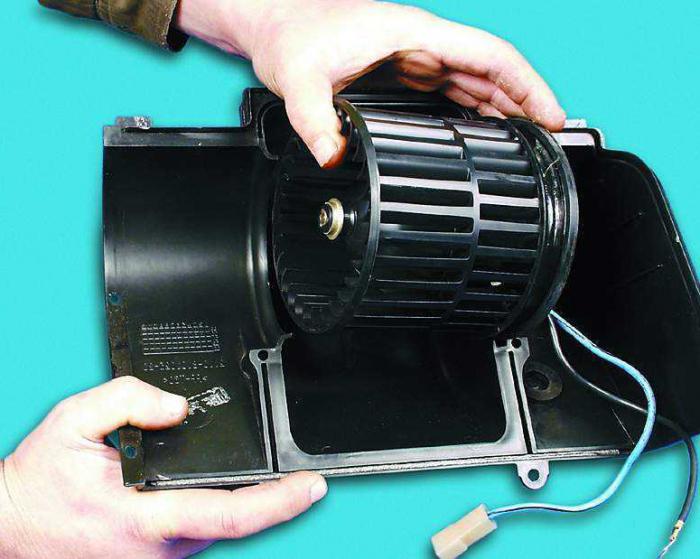
Checking the electric motor, as in the case of the micromotor gearbox, consists in its direct connection to the battery terminals.
There may be a situation where everything works, but the air flow is too weak. This could be caused by a clogged cabin filter. Clean, or rather replace it with a new one.
Why does the air not heat up
It also happens that the on-board computer on the VAZ-2110, having received a task to warm up the passenger compartment to a certain temperature, cannot cope with it. The radiator seems to be working properly, the fan is running, and the supplied air is not warm enough. The first reason may be the same temperature sensor, by checking the resistance of which, you can assess its performance. The second possible cause is a jammed damper. Yes, that happens a lot. The damper heats up, expands and wedges. You can diagnose such a malfunction by disassembling the front deflectors and moving the air shutoff mechanism with a screwdriver when the heating is on. 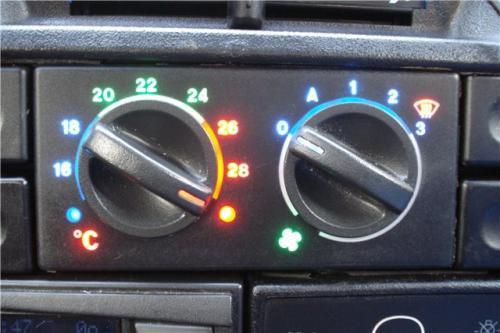
But most often, insufficient heating of the VAZ-2110 is a consequence of the negligence of the car owner. The lack of the required level of coolant leads to the fact that it enters the heater radiator without filling it completely. In this case, before adding antifreeze or antifreeze, it will not be superfluous to check the system for leaks. Most likely, there is a coolant leak somewhere.
- Always fill the system with only high quality coolant specified by the vehicle manufacturer.
- Constantly check the level and also pay attention to the pressure in the cooling system. Leaks from under the expansion tank plug may indicate that a plug has formed somewhere.
- Check the condition of the cabin filter to prevent dirt, dust and foreign objects from entering the heater.
- Even in summer, sometimes check the operation of the heater fan and the micromotor gearbox, turning them on for a short time.
- Do not allow water to enter the “stove” body.
- If you find a leak in the heater radiator, repair or replace it with a new one.

